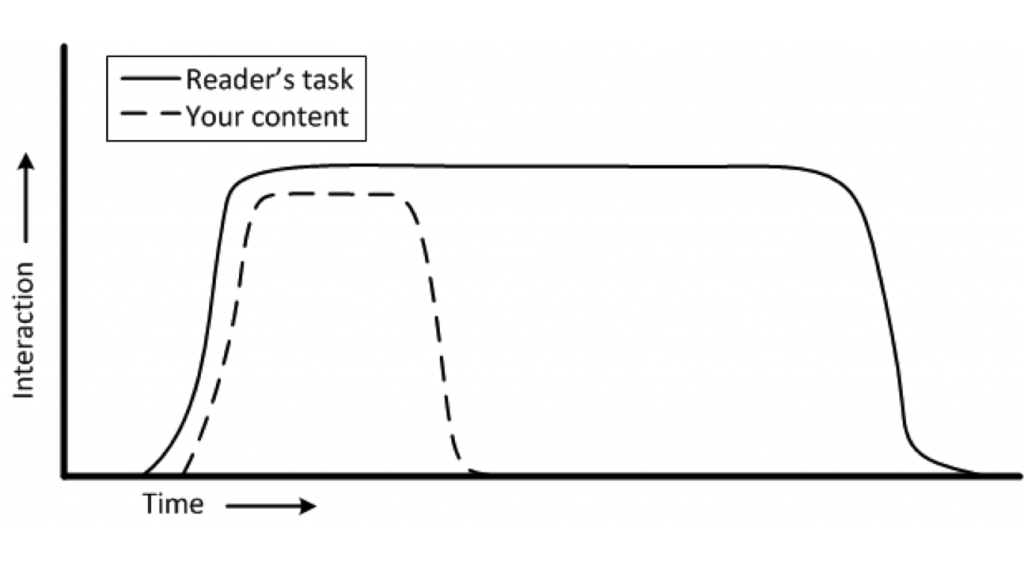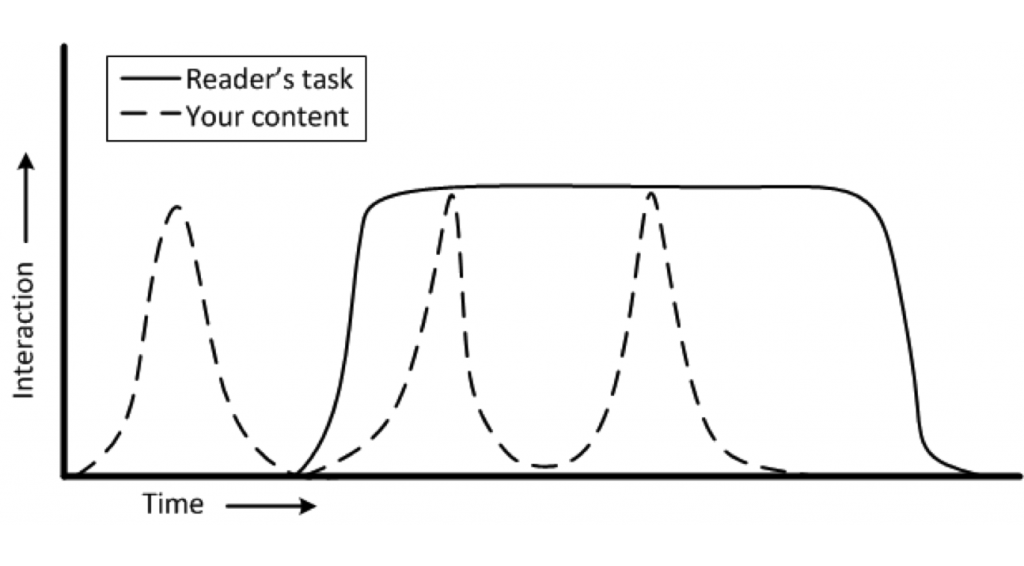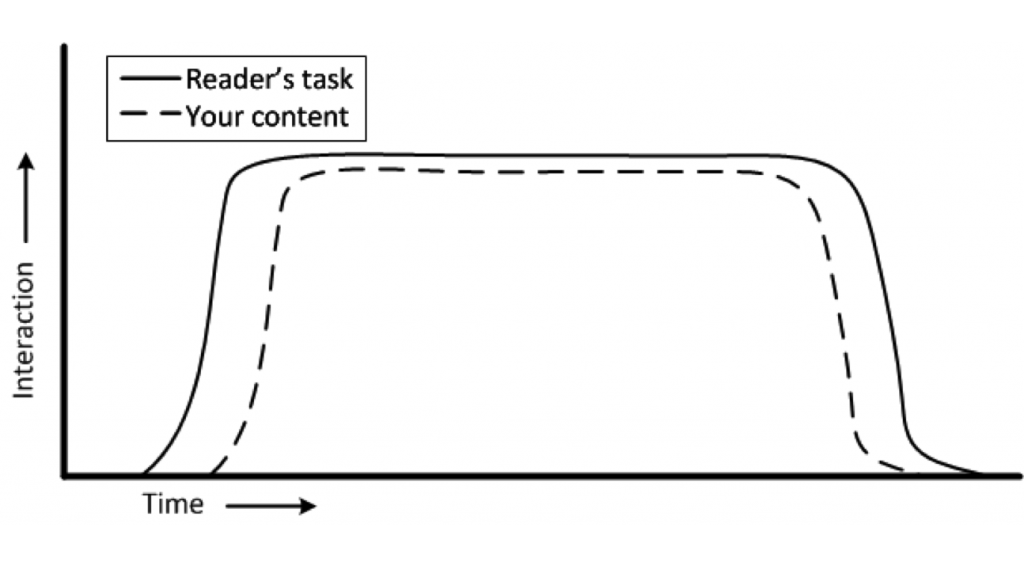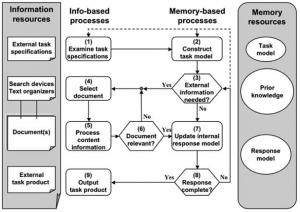This series looks at the different site interactions that readers have with informational sites and is adapted from the full paper on the topic that I wrote with Jan Spyridakis and presented at HCII 2015: Using Readers’ and Organizations’ Goals to Guide Assessment of Success in Information Websites. See the entire series
Reading to Do a Task Outside the Website Now
Readers who interact with a website to do a task outside the website seek to complete their task while reading the website for the information they need. Examples of such websites include sites that describe how to repair a household appliance or how to cook a meal. The figure shows the interaction between the readers’ goal and their interaction with the content.

In this type of interaction, readers interact with the content after they decide to perform the task and end their interaction with the content when they feel confident enough to complete the task without additional information. At that point, they continue towards their goal without the content. Depending on the complexity and duration of the task, readers might return to the content several times during the task, but the key aspect of this interaction with the content is that it does not coincide with task completion.
This interaction can influence several aspects of the design. For example, readers might like to print the web content to save or refer to later, so it might be inconvenient to have the web content spread over several web pages. However, because readers might stop interacting with the content at any point, the content could be divided into individual pages of logical steps with natural breaks.
Because readers stop interacting with the content before the complete their task, asking for information about their task when they leave the content might be confusing because they haven’t finished it, yet. On the other hand, asking about the content might be reasonable.
Tracking progress, success, and satisfaction for this type of interaction requires coordination with the content design. The task and subtask flows must be modeled in the content’s design so that the instrumentation used to collect data about the interaction coordinates with the readers’ interaction. Because readers can leave the content before they read all of the content and still complete their task successfully, traditional web-based metrics such as average time-on-page and path are ambiguous with respect to the readers’ experiences. It is impossible, for example, to know if having readers exit a procedure on the first step is good or bad without knowing whether they are also dissatisfied or unsuccessful with the content. Ideally, collecting information about their experience will come shortly after they accomplish their goal. For example, posting a review of their recipe on social media after they finish.





